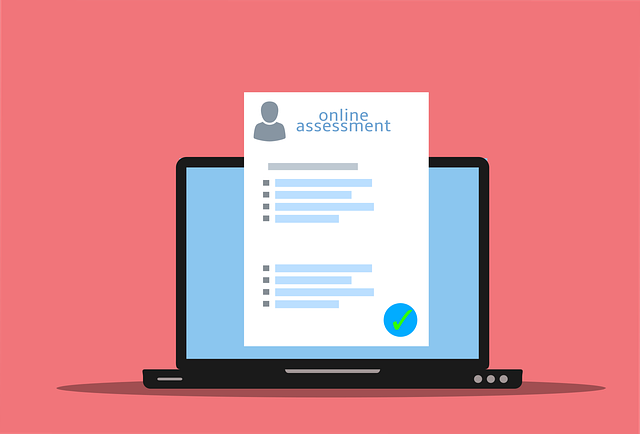What are Self-Assessment?
The HR Self-Assessment
An HR self-assessment is a process that HR professionals use to evaluate their own performance and identify areas where they can improve. This type of assessment can be used to assess individual employees or an entire department. By conducting a self-assessment, HR professionals can identify areas where they need to make changes or improvements.
Self-assessments can be conducted in a number of ways, but most commonly involve using a questionnaire or checklist. HR professionals may also use other methods, such as interviews or focus groups. The self-assessment process should be tailored to the specific needs of the organization and the individuals being assessed.
Self-assessments can be an important tool for HR professionals. They can help identify areas where improvements are needed, and they can also help assess the effectiveness of current HR practices. When used correctly, self-assessments can be a valuable tool for improving the performance of HR professionals and the organizations they work for.

One way to improve the performance of the organization is through the use of the Employee Evaluation.
^ Back to Top
What are leadership skills?
Leadership
skills are the abilities and qualities that allow someone to lead and motivate others. These skills can be useful in a variety of situations, from work to school to volunteer organizations. Some common leadership
skills include communication, decisiveness, adaptability, and empathy. Leaders use these skills to build relationships, solve problems, and achieve goals. Leaders also need to have a vision for what they want to achieve and the ability to inspire others to work towards that goal.
^ Back to Top
What is employee management?
Employee management is a process that includes recruiting, selecting, training, assigning, scheduling, appraising, motivating, and disciplining employees. Organizations need human resources
managers to oversee employee management processes and ensure compliance with employment laws.

Employee management is the process of recruiting, selecting, training, assigning, scheduling, appraising, motivating, and disciplining employees. Organizations need human resources
managers to oversee employee management processes and ensure compliance with employment laws.
The goal of employee management is to create a workplace where employees are
productive and motivated. To achieve this, businesses must provide employees with the tools and support they
need to do their jobs well. Employee management involves creating policies and procedures, setting goals, and providing training. It also includes tracking employee performance and providing feedback. Good employee management practices can help businesses improve
productivity and profitability.
When done well, employee management can lead to a more positive work environment and higher levels of employee satisfaction. Poorly managed employees, on the other hand, can be a drag on productivity and profitability. In order to be successful, businesses must invest time and resources into employee management.

Employee management is a critical part of running a successful business. By taking the time to develop and implement effective employee management practices, businesses can create a workplace where employees are productive and motivated.
^ Back to Top
What is the performance review process?
The performance review process is a way for
managers to provide feedback to employees about their job performance. The process typically includes setting performance goals, assessing progress towards those goals, and providing feedback to the employee. Performance reviews can be conducted on an individual or team basis.
The performance review process is an important part of managing employee performance. By setting performance goals and providing feedback, managers can help employees understand what is expected of them and how they are doing in their job. The process can also help identify areas where employees need improvement. Performance reviews can be conducted on an individual or team basis.

When conducting a performance review, managers should first set performance goals with the employee. These goals should be specific, measurable, achievable, relevant, and time-bound. Once the goals have been set, the manager should assess the employee’s progress towards those goals. This can be done through observation, reviewing work products, or speaking with other people who have worked with the employee. Finally, the manager should provide feedback to the employee about their performance.
This feedback should be both positive and constructive, and it should help the employee understand what they are doing well and where they need to improve.
^ Back to Top
When is the best time to do an employee review?
The best time to do an employee review is typically at the end of a project or performance period. This allows for the most accurate reflection of an individual’s contributions and also provides a natural opportunity to set goals for the future. Additionally, it can be helpful to schedule reviews in advance so that employees have time to prepare and so that managers can ensure they are providing adequate feedback.
 ^ Back to Top
^ Back to Top
What is a performance evaluation?
A performance evaluation is a process used by organizations to measure an employee’s job performance and determine whether they are meeting the expectations set for their role. This process can involve a variety of methods, including written assessments, interviews, and objective observation. Performance evaluations can be conducted on an individual or group basis, and they often include feedback from both managers and peers.
The purpose of a performance evaluation is to provide employees with an opportunity to receive feedback on their work and identify areas where they can improve. Additionally, these evaluations can help organizations identify top performers and provide them with opportunities for advancement. Ultimately, the goal of a performance evaluation is to promote a culture of excellence within the organization by ensuring that all employees are held
accountable for meeting the standards set for their position.
 ^ Back to Top
^ Back to Top
What is professional development?
Professional development is the process of improving one’s skills and abilities in order to be more effective in their current role or prepare for future opportunities. It can involve formal training and
education, but also informal learning experiences such as mentorship, networking, and on-the-job learning. Professional development is important for anyone who wants to advance their
career or improve their job performance.
^ Back to Top
What is an employee evaluation?
An employee evaluation is a periodic assessment of an individual’s job performance and overall contribution to the organization. The purpose of an employee evaluation is to provide feedback to the employee on their performance, identify areas where the employee may need improvement, and document an employee’s progress over time. Employee evaluations can be conducted through a variety of methods, including one-on-one meetings, written evaluations, or a combination of both.

When conducting an employee evaluation, it is important to be clear and concise in your feedback. Employee evaluations should focus on the employee’s performance over the previous period of time, rather than on personal traits or characteristics. Additionally, it is important to avoid using evaluative language that could be interpreted as either positive or negative. For example, instead of saying “you did a great job” or “you need to improve,” it is better to say “your performance was above average” or “there is room for improvement.”
Employee evaluations can be beneficial for both the employer and employee.
Employers can use employee evaluations to identify areas where employees need improvement and to document an employee’s progress over time. Employees can use employee evaluations as a way to receive feedback on their performance and to identify areas where they may need to make changes. Additionally, employee evaluations can help to foster a sense of mutual respect between the employer and employee.
 ^ Back to Top
^ Back to Top
What is an employee evaluation form?
An employee evaluation form is used to gather feedback about an employee’s job performance. The form typically includes questions about the employee’s strengths and weaknesses, as well as their overall satisfaction with their job. The feedback from the evaluation can be used to help the employee improve their performance and keep them on track with their career goals.
Example questions on an employee evaluation form
An employee evaluation form may ask questions such as the following:
– How well do you feel the employee has performed their job?
– Do you believe the employee has contributed positively to the workplace?
– Has the employee demonstrated good work ethic and attendance?
– Do you have any suggestions on how the employee could improve their performance?
– Would you recommend the employee for a promotion or raise?

These are just some
examples of questions that could be asked on an employee evaluation form. Ultimately, the questions will vary depending on the organization and what they are looking to assess.
^ Back to Top
Where to obtain sample employee evaluation forms
There are many places where people can get sample employee evaluation forms. Some companies have their own
human resources department that can provide these forms. There are also a number of websites that offer free or paid employee evaluation forms. Finally, there are a number of software programs that can generate employee evaluation forms.
^ Back to Top
Why should companies purchase employee evaluation forms
The main reason a company should purchase a paid
employee evaluation form is because it will help to ensure that the process is fair and objective. This is especially important if there are concerns about potential bias in the way that evaluations are conducted. By using a standardized form, all employees can be evaluated in the same way and on the same basis. This will help to ensure that the results of the evaluation are more accurate and reliable.

Another reason to use a paid employee evaluation form is that it can help to save time. If all of the information that is
needed is already included on the form, there will be no need to waste time gathering it from different sources. This can be a significant advantage, particularly in larger organizations where there are many employees to be evaluated.
Finally, using a paid employee evaluation form can also help to improve communication between managers and employees. If employees feel that they are being treated fairly and objectively, they are more likely to be open and honest with their managers. This can lead to better relationships and increased cooperation between employees and managers.
^ Back to Top
Can an employee evaluation can be abused?
An employee evaluation can be abused. If an employer is not careful, they can easily use the evaluation process to unfairly target and mistreat employees. This is why it is so important for employers to create a fair and objective evaluation system, and to ensure that all managers and supervisors are trained on how to properly use it. Unfortunately, even with the best of intentions, abuse can still occur. If you feel that you have been a victim of evaluation abuse, you should speak to your
HR department or a labor attorney.
 ^ Back to Top
^ Back to Top
When should a company use online evaluation forms?
An online evaluation form can be an excellent tool for a company to use to collect feedback from employees. It can be used to gauge employee satisfaction with the company, identify areas that need improvement, and get feedback on specific programs or initiatives. Additionally, online evaluation forms can be used to assess employee training needs and evaluate the effectiveness of training programs.
^ Back to Top
What does it mean to be on the same page?
The phrase “on the same page” is often used to describe a situation where two or more people are in agreement about something. In other words, they are “on the same page” because they share the same understanding or perspective. This can be important in any kind of relationship, whether it’s between friends, family
members, co-workers, or business partners. When people are on the same page, it can make communication and collaboration much easier. On the other hand, when people are not on the same page, it can lead to misunderstandings and conflict. So it’s generally best to try to ensure that everyone is on the same page before moving forward with any kind of plan or project.
 ^ Back to Top
^ Back to Top
What are open ended question?
An opened question is a question that does not have a specific answer. The person asking the question may be looking for more information or for a discussion on the topic. Opened questions can be used to encourage critical thinking and to get people to share their opinions.
^ Back to Top
Give an example of an open ended question on an employee evaluation
An open-ended question on an employee evaluation might be something like, “Please describe what you feel are your strengths and weaknesses.” This allows the employee to openly discuss their thoughts and feelings about their work performance, and gives the evaluator insight into how the employee perceives their own skills. Asking open-ended questions also allows the employee to provide suggestions for improvement, and gives them a chance to express any concerns they may have about their work.
 ^ Back to Top
^ Back to Top
What are some of the best ways to provide feedback to employees?
When it comes to giving employees feedback, there are a few things you should keep in mind. First, try to be as specific as possible. This way, employees will
know exactly what they need to work on. Second, avoid using general comments like “good
job” or “keep up the good work.” Instead, focus on what the employee did well and how they can improve. Finally, make sure to give feedback in a timely manner so that employees can make the necessary changes.
^ Back to Top
Why are managers responsible for training and developing their employees?
As a manager, it is your
job to train and develop your employees so that they have the skills and knowledge necessary to be successful in their roles. By providing training and development opportunities, you can help your employees reach their full potential and contribute to the
success of your organization. Additionally, investing in your employees’ development shows them that you are committed to their growth and development, which can help to foster a positive and productive work environment.
 ^ Back to Top
^ Back to Top
What is employee feedback
Employee feedback is an important part of the communication process between employees and employers. It allows employees to share their ideas, concerns, and suggestions with their employer in a constructive way. Feedback also helps employers identify areas where they can improve their policies and procedures. When done correctly, employee feedback can help create a positive work environment that benefits both employees and employers.
^ Back to Top
What is student progress
Student progress is the term used to describe how well a student is doing in school. This can be measured in a number of ways, but most commonly includes grades, standardized test scores, and attendance. Progress is important for students because it helps them see how they are doing and where they need to improve. It also allows educators to track individual students’ progress and identify areas where they may need additional support.
 ^ Back to Top
^ Back to Top
When should an employee performance evaluation form be used?
There are many different types of employee performance evaluation forms. The type of form that an employee would use depends on the company’s performance management system and the individual employee’s goals. Some companies may require employees to fill out a self-evaluation form before their formal performance review. Other companies may have employees fill out a standard form that
covers all aspects of their job. Regardless of the type of form, employee performance evaluation forms are important tools for setting goals, measuring progress, and providing feedback.
An employee would use an employee performance evaluation form when they have a formal meeting with their supervisor to discuss their job performance. The form would help the employee and supervisor identify areas of improvement and set goals for the future. The form would also provide a record of the employee’s performance over time.

If you are an employee, it is important to be familiar with the different types of employee performance evaluation forms. Knowing which form to use in what situation will help you get the most out of your performance review and set yourself up for success.
^ Back to Top
What is an evaluation survey?
An evaluation survey is a tool used to collect data and feedback from individuals in order to measure satisfaction, success or progress in relation to a specific event, program, product or service. Evaluation surveys can be designed to target a range of different audiences, including employees, customers, clients or patients. The questions asked in an evaluation survey will vary depending on the target audience and the purpose of the survey, but common themes include satisfaction levels, experiences with a specific event or service, and suggestions for improvement. Evaluation surveys can be an important tool for organizations to gauge whether they are meeting the needs of their stakeholders and identify areas in need of improvement.
 ^ Back to Top
^ Back to Top
What are the rating scales for employee performance
The rating scale is a tool used by managers to rate an employee’s performance. The scale is usually 1-5, with 5 being the highest score. The manager will use the rating scale to rate the employee’s performance in various areas, such as customer service, teamwork, and job knowledge. The rating scale is a valuable tool for managers, as it allows them to compare an employee’s performance to others in the company.
The rating scale can also be used by employees to rate their own performance. This can be a useful tool for employees to identify areas in which they need to improve. Employees can also use the rating scale to set goals for themselves. For example, an employee may set a goal to receive a score of 4 or 5 in all areas of the rating scale.
The rating scale is a valuable tool for both managers and employees. It can help managers identify areas in which an employee needs to improve, and it can help employees set goals for themselves.
 ^ Back to Top
^ Back to Top
Why are communication skills important?
Communication skills are important in all aspects of life. Whether you are communicating with a colleague, friend, family member, or stranger, effective communication is key to maintaining positive relationships. When your communication skills are strong, you are better able to express your thoughts and feelings, and also to understand the thoughts and feelings of others. Good communication can make all the difference in your personal and professional life.
There are many different ways to improve your communication skills. One way is to practice active listening, which involves paying attention to the speaker, making eye contact, and responding with questions or comments that show you are interested in what is being said. Another way to improve your communication skills is to be an effective communicator yourself. When you are clear and concise in your own communication, others are more likely to understand you and respond positively.

The importance of communication skills cannot be underestimated. If you want to be successful in all areas of your life, it is essential that you work on improving your communication skills. With practice and patience, you can develop the communication skills that will help you build strong, lasting relationships with the people in your life.
If you find that your communication skills are lacking, there are many resources available to help you improve them. There are books, articles, and even online courses that can teach you how to communicate more effectively. By taking the time to improve your communication skills, you will be setting yourself up for success in all areas of your life.
^ Back to Top
What is employee engagement?
Employee engagement is a term used to describe the level of an employee’s involvement and commitment to their work and company. An engaged employee is one who is enthusiastic about their
job and takes pride in their work. They are also more likely to be productive, creative, and motivated. Engaged employees are more likely to stay with a company for the long term and are less likely to leave for another job.

There are many factors that contribute to employee engagement. A company’s culture, values, and mission play a role in how engaged employees are. The way a company treats its employees also has an impact. employees who feel valued and appreciated by their employer are more likely to be engaged.
There are many benefits to having an engaged workforce. Engaged employees are more productive and can help a company improve its bottom line. They are also less likely to take sick days, and when they do, they are more likely to return to work quickly. Additionally, engaged employees tend to be more creative and innovative. They are also more likely to share their ideas with others and be more open to new ideas.
Engaged employees are an important part of any company.
Creating a culture of engagement can help a company attract and retain the best talent. It can also improve a company’s bottom line. Employee engagement is a term used to describe the level of an employee’s involvement and commitment to their work and company. An engaged employee is one who is enthusiastic about their
job and takes pride in their work. They are also more likely to be productive, creative, and motivated. Engaged employees are more likely to stay with a company for the long term and are less likely to leave for another job.

There are many factors that contribute to employee engagement. A company’s culture, values, and mission play a role in how engaged employees are. The way a company treats its employees also has an impact. employees who feel valued and appreciated by their employer are more likely to be engaged.
There are many benefits to having an engaged workforce. Engaged employees are more productive and can help a company improve its bottom line. They are also less likely to take sick days, and when they do, they are more likely to return to work quickly. Additionally, engaged employees tend to be more creative and innovative. They are also more likely to share their ideas with others and be more open to new ideas.
Engaged employees are an important part of any company. Creating a culture of engagement can help a company attract and retain the best talent. It can also improve a company’s bottom line.
^ Back to Top
^ Back to Top
How the Mapertunity Experience is Different
When we designed Mapertunity, we optimized for both the candidate and the
hiring managers experience.
- Candidate wants to find jobs that are not only a perfect fit for them but are closest to where they are currently located.
- Hiring Managers wants to find the perfect candidate and would love to avoid the expenses of relocating someone.
Mapertunity brings both of these desires together. But it does much more than that.
Mapertunity removes all the friction that the current system has built into it. There is no more guessing what
candidates are available or what jobs are available.
Both available jobs and available candidates in a geographic searchable region are simply displayed on the map to be further explored. In addition, contact information is not hidden for either the Hiring Manager or potential Candidates. There are no hidden barriers, like third party recruiters, between candidates and job posters.
There is currently no system in the world that will tell a company how many actual workers are available within any geographic region in the world.
There is currently no system in the world that will display on a
map all the jobs and all the companies hiring in any geographic region in the world.
Just center the
map on your location and press SEARCH.
Mapertunity can do this. Mapertunitye will show you where both the
jobs and the candidates are located. There is no system that will tell
workers which companies are hiring in any geographic radius where the job seeker might be interested in searching.
^ Back to Top
Mapertunity reduces the global carbon footprint of both workers and businesses.
We believe the closer a
job is to someone’s current location, the more likely they will stay in that job and the closer a worker is to a business, the more likely a business will be able to hold onto those workers. Economist calls this “being sticky”.
 ^ Back to Top
^ Back to Top
On Mapertunity you can Search Jobs and Candidates By:
- Job Title or Keyword
- City
- State/Region
- Country
- Postal Code
- Industry
- Distance from Map Center ( Search the whole Earth if you want)
^ Back to Top

 One way to improve the performance of the organization is through the use of the Employee Evaluation.
^ Back to Top
One way to improve the performance of the organization is through the use of the Employee Evaluation.
^ Back to Top
 Employee management is the process of recruiting, selecting, training, assigning, scheduling, appraising, motivating, and disciplining employees. Organizations need human resources managers to oversee employee management processes and ensure compliance with employment laws.
The goal of employee management is to create a workplace where employees are productive and motivated. To achieve this, businesses must provide employees with the tools and support they need to do their jobs well. Employee management involves creating policies and procedures, setting goals, and providing training. It also includes tracking employee performance and providing feedback. Good employee management practices can help businesses improve productivity and profitability.
When done well, employee management can lead to a more positive work environment and higher levels of employee satisfaction. Poorly managed employees, on the other hand, can be a drag on productivity and profitability. In order to be successful, businesses must invest time and resources into employee management.
Employee management is the process of recruiting, selecting, training, assigning, scheduling, appraising, motivating, and disciplining employees. Organizations need human resources managers to oversee employee management processes and ensure compliance with employment laws.
The goal of employee management is to create a workplace where employees are productive and motivated. To achieve this, businesses must provide employees with the tools and support they need to do their jobs well. Employee management involves creating policies and procedures, setting goals, and providing training. It also includes tracking employee performance and providing feedback. Good employee management practices can help businesses improve productivity and profitability.
When done well, employee management can lead to a more positive work environment and higher levels of employee satisfaction. Poorly managed employees, on the other hand, can be a drag on productivity and profitability. In order to be successful, businesses must invest time and resources into employee management.
 Employee management is a critical part of running a successful business. By taking the time to develop and implement effective employee management practices, businesses can create a workplace where employees are productive and motivated.
^ Back to Top
Employee management is a critical part of running a successful business. By taking the time to develop and implement effective employee management practices, businesses can create a workplace where employees are productive and motivated.
^ Back to Top
 When conducting a performance review, managers should first set performance goals with the employee. These goals should be specific, measurable, achievable, relevant, and time-bound. Once the goals have been set, the manager should assess the employee’s progress towards those goals. This can be done through observation, reviewing work products, or speaking with other people who have worked with the employee. Finally, the manager should provide feedback to the employee about their performance. This feedback should be both positive and constructive, and it should help the employee understand what they are doing well and where they need to improve.
^ Back to Top
When conducting a performance review, managers should first set performance goals with the employee. These goals should be specific, measurable, achievable, relevant, and time-bound. Once the goals have been set, the manager should assess the employee’s progress towards those goals. This can be done through observation, reviewing work products, or speaking with other people who have worked with the employee. Finally, the manager should provide feedback to the employee about their performance. This feedback should be both positive and constructive, and it should help the employee understand what they are doing well and where they need to improve.
^ Back to Top
 ^ Back to Top
^ Back to Top
 ^ Back to Top
^ Back to Top
 When conducting an employee evaluation, it is important to be clear and concise in your feedback. Employee evaluations should focus on the employee’s performance over the previous period of time, rather than on personal traits or characteristics. Additionally, it is important to avoid using evaluative language that could be interpreted as either positive or negative. For example, instead of saying “you did a great job” or “you need to improve,” it is better to say “your performance was above average” or “there is room for improvement.”
Employee evaluations can be beneficial for both the employer and employee. Employers can use employee evaluations to identify areas where employees need improvement and to document an employee’s progress over time. Employees can use employee evaluations as a way to receive feedback on their performance and to identify areas where they may need to make changes. Additionally, employee evaluations can help to foster a sense of mutual respect between the employer and employee.
When conducting an employee evaluation, it is important to be clear and concise in your feedback. Employee evaluations should focus on the employee’s performance over the previous period of time, rather than on personal traits or characteristics. Additionally, it is important to avoid using evaluative language that could be interpreted as either positive or negative. For example, instead of saying “you did a great job” or “you need to improve,” it is better to say “your performance was above average” or “there is room for improvement.”
Employee evaluations can be beneficial for both the employer and employee. Employers can use employee evaluations to identify areas where employees need improvement and to document an employee’s progress over time. Employees can use employee evaluations as a way to receive feedback on their performance and to identify areas where they may need to make changes. Additionally, employee evaluations can help to foster a sense of mutual respect between the employer and employee.
 ^ Back to Top
^ Back to Top
 These are just some examples of questions that could be asked on an employee evaluation form. Ultimately, the questions will vary depending on the organization and what they are looking to assess.
^ Back to Top
These are just some examples of questions that could be asked on an employee evaluation form. Ultimately, the questions will vary depending on the organization and what they are looking to assess.
^ Back to Top
 Another reason to use a paid employee evaluation form is that it can help to save time. If all of the information that is needed is already included on the form, there will be no need to waste time gathering it from different sources. This can be a significant advantage, particularly in larger organizations where there are many employees to be evaluated.
Finally, using a paid employee evaluation form can also help to improve communication between managers and employees. If employees feel that they are being treated fairly and objectively, they are more likely to be open and honest with their managers. This can lead to better relationships and increased cooperation between employees and managers.
^ Back to Top
Another reason to use a paid employee evaluation form is that it can help to save time. If all of the information that is needed is already included on the form, there will be no need to waste time gathering it from different sources. This can be a significant advantage, particularly in larger organizations where there are many employees to be evaluated.
Finally, using a paid employee evaluation form can also help to improve communication between managers and employees. If employees feel that they are being treated fairly and objectively, they are more likely to be open and honest with their managers. This can lead to better relationships and increased cooperation between employees and managers.
^ Back to Top
 ^ Back to Top
^ Back to Top
 ^ Back to Top
^ Back to Top
 ^ Back to Top
^ Back to Top
 ^ Back to Top
^ Back to Top
 ^ Back to Top
^ Back to Top
 If you are an employee, it is important to be familiar with the different types of employee performance evaluation forms. Knowing which form to use in what situation will help you get the most out of your performance review and set yourself up for success.
^ Back to Top
If you are an employee, it is important to be familiar with the different types of employee performance evaluation forms. Knowing which form to use in what situation will help you get the most out of your performance review and set yourself up for success.
^ Back to Top
 ^ Back to Top
^ Back to Top
 ^ Back to Top
^ Back to Top
 The importance of communication skills cannot be underestimated. If you want to be successful in all areas of your life, it is essential that you work on improving your communication skills. With practice and patience, you can develop the communication skills that will help you build strong, lasting relationships with the people in your life.
If you find that your communication skills are lacking, there are many resources available to help you improve them. There are books, articles, and even online courses that can teach you how to communicate more effectively. By taking the time to improve your communication skills, you will be setting yourself up for success in all areas of your life.
^ Back to Top
The importance of communication skills cannot be underestimated. If you want to be successful in all areas of your life, it is essential that you work on improving your communication skills. With practice and patience, you can develop the communication skills that will help you build strong, lasting relationships with the people in your life.
If you find that your communication skills are lacking, there are many resources available to help you improve them. There are books, articles, and even online courses that can teach you how to communicate more effectively. By taking the time to improve your communication skills, you will be setting yourself up for success in all areas of your life.
^ Back to Top
 There are many factors that contribute to employee engagement. A company’s culture, values, and mission play a role in how engaged employees are. The way a company treats its employees also has an impact. employees who feel valued and appreciated by their employer are more likely to be engaged.
There are many benefits to having an engaged workforce. Engaged employees are more productive and can help a company improve its bottom line. They are also less likely to take sick days, and when they do, they are more likely to return to work quickly. Additionally, engaged employees tend to be more creative and innovative. They are also more likely to share their ideas with others and be more open to new ideas.
Engaged employees are an important part of any company. Creating a culture of engagement can help a company attract and retain the best talent. It can also improve a company’s bottom line. Employee engagement is a term used to describe the level of an employee’s involvement and commitment to their work and company. An engaged employee is one who is enthusiastic about their job and takes pride in their work. They are also more likely to be productive, creative, and motivated. Engaged employees are more likely to stay with a company for the long term and are less likely to leave for another job.
There are many factors that contribute to employee engagement. A company’s culture, values, and mission play a role in how engaged employees are. The way a company treats its employees also has an impact. employees who feel valued and appreciated by their employer are more likely to be engaged.
There are many benefits to having an engaged workforce. Engaged employees are more productive and can help a company improve its bottom line. They are also less likely to take sick days, and when they do, they are more likely to return to work quickly. Additionally, engaged employees tend to be more creative and innovative. They are also more likely to share their ideas with others and be more open to new ideas.
Engaged employees are an important part of any company. Creating a culture of engagement can help a company attract and retain the best talent. It can also improve a company’s bottom line. Employee engagement is a term used to describe the level of an employee’s involvement and commitment to their work and company. An engaged employee is one who is enthusiastic about their job and takes pride in their work. They are also more likely to be productive, creative, and motivated. Engaged employees are more likely to stay with a company for the long term and are less likely to leave for another job.
 There are many factors that contribute to employee engagement. A company’s culture, values, and mission play a role in how engaged employees are. The way a company treats its employees also has an impact. employees who feel valued and appreciated by their employer are more likely to be engaged.
There are many benefits to having an engaged workforce. Engaged employees are more productive and can help a company improve its bottom line. They are also less likely to take sick days, and when they do, they are more likely to return to work quickly. Additionally, engaged employees tend to be more creative and innovative. They are also more likely to share their ideas with others and be more open to new ideas.
Engaged employees are an important part of any company. Creating a culture of engagement can help a company attract and retain the best talent. It can also improve a company’s bottom line.
^ Back to Top
^ Back to Top
There are many factors that contribute to employee engagement. A company’s culture, values, and mission play a role in how engaged employees are. The way a company treats its employees also has an impact. employees who feel valued and appreciated by their employer are more likely to be engaged.
There are many benefits to having an engaged workforce. Engaged employees are more productive and can help a company improve its bottom line. They are also less likely to take sick days, and when they do, they are more likely to return to work quickly. Additionally, engaged employees tend to be more creative and innovative. They are also more likely to share their ideas with others and be more open to new ideas.
Engaged employees are an important part of any company. Creating a culture of engagement can help a company attract and retain the best talent. It can also improve a company’s bottom line.
^ Back to Top
^ Back to Top
 ^ Back to Top
^ Back to Top